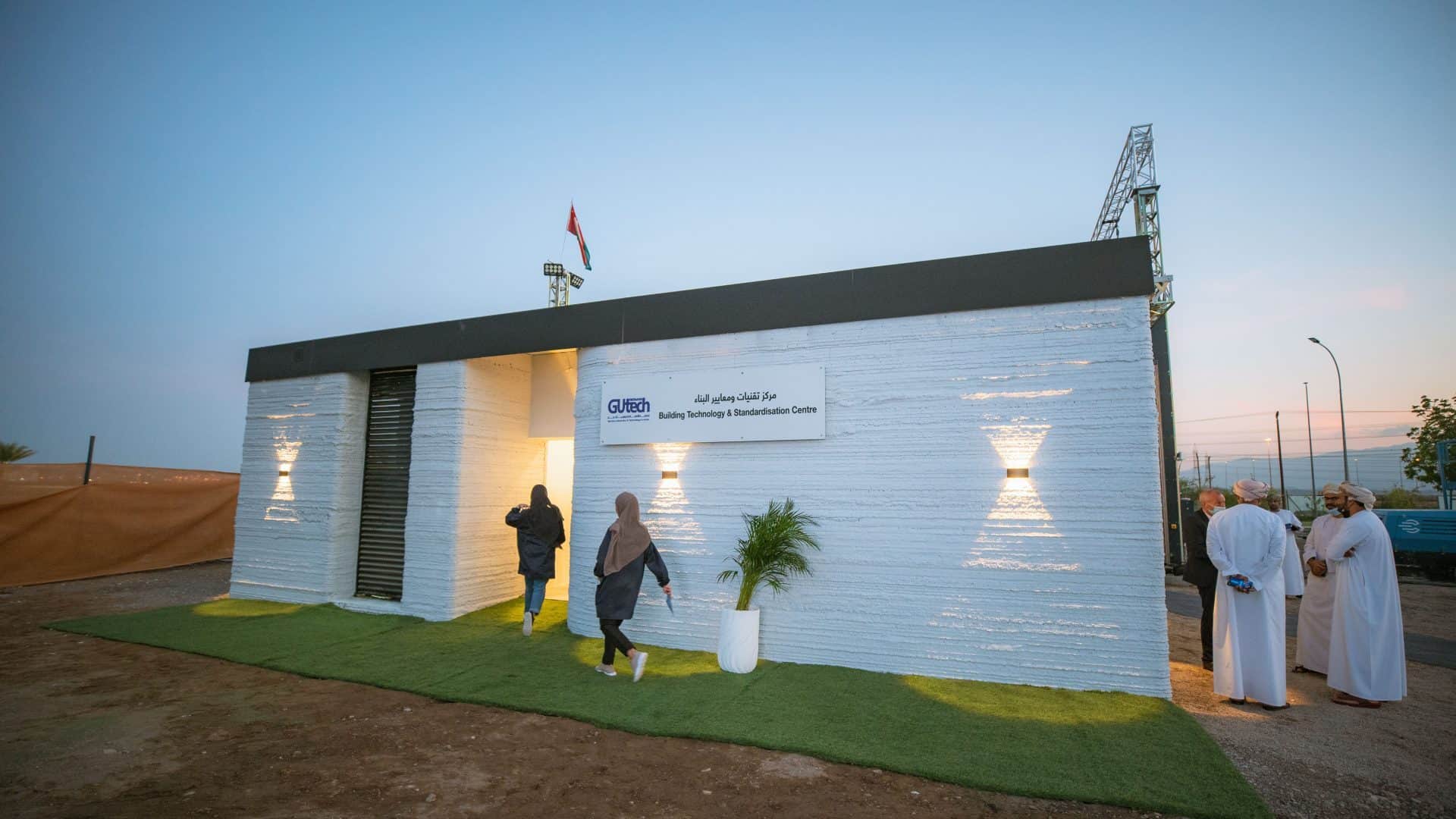3D printed houses are a new and exciting alternative to traditional construction methods. They are quicker to construct, often more cost-effective, and provide a unique opportunity to customize the design of your home.
However, the traditional construction methods have been tried and tested over many years, and provide a reliable and safe option. Nevertheless, in our opinion, 3D printed constructions have more advantages over conventionally built buildings.
Cost Difference
3D construction printing offers a revolutionary alternative to traditional construction methods, allowing for greater affordability and efficiency. According to a recent article in the World Economic Forum, 3D printed houses can cost up to 45% less than those built with traditional methods, by eliminating the need for expensive materials and labor.
3D printed houses require less material and labor, and the process of printing is automated, meaning less labor costs for the builder. Additionally, 3D printed houses are made with fewer materials which can be sourced locally, meaning less time and effort is required to assemble the construction. This can result in a significant reduction in the overall cost of the home. This makes 3D printed homes much more economical than traditional construction, resulting in significant savings in both time and money.
Important note: After building the foundation and walls, you may need more workers to complete the building, such as adding plumbing and installing windows. However, thanks to 3D printing, which streamlines the integration of other trades into the building process, openings in the walls and foundation for plumbing, windows, electrical outputs, and other features can be easily created.
Furthermore, 3D printing is a much faster process than traditional construction, since it is related to the speed of the process, meaning that entire houses can be built in a fraction of the time. This allows for increased productivity, as projects can be completed quickly and with minimal disruption. Additionally, the construction process is automated, which means that the risk of human error is drastically reduced.
Interested in what challenges 3D construction industry faces? Read our article about advantages and disadvantages of 3D printed home.
Faster Execution of Projects Compared to Traditional Construction
3D printed houses offer a distinct advantage over traditional construction methods when it comes to speed. 3D printed houses can be constructed up to 20x faster than traditional construction methods, resulting in significant time and cost savings.
For example, our partners 14Trees and Holcim have achieved astonishing results, showcasing the full capacity of 3D construction printing technology. 14Trees was able to 3D print 10 houses in 10 weeks on the largest 3D printing project site. However, the company is planning to 3D print up to 52 houses in Kilifi, Kenya, using a single BOD2 printer from COBOD. Moreover, 14Trees is aiming at lowering construction costs further such that the build cost is 20% lower than standard houses.
Less reinforcement required
While traditional methods rely on the use of precast elements and reinforcement, 3D printing eliminates reinforcement and instead prints columns as load-bearing elements. Plus, the environmental impact of 3D printed houses is much lower than traditional methods due to the elimination of reinforcement and precast elements, making it a more sustainable option.
Furthermore, 3D printed houses are also more environmentally friendly than traditional construction methods, as they require less material and energy to construct. This can help reduce the environmental impact of the construction process, making 3D printed houses a more sustainable option.
Freedom of design
In the past, traditional construction methods have placed restrictions on the design of buildings, due to the limitations of the materials and tools available. But with the introduction of 3D printing, architects are now able to create more imaginative and customized designs, as this technology gives them the freedom to explore outside of the box.
Moreover, creating rounded corners or curved walls is no longer a question of additional costs. As implementing these design ideas with 3D construction printing will create no extra expenses.
For instance, our partner, Dar Al Arkan, has accomplished a stunning villa that showcases the amazing potential of 3D concrete printing technology in the construction industry.
The villa is packed with smart features that allow for easy control of various functions, including doors, locks, AC, and lighting. What really sets this project apart is the level of design flexibility made possible by 3D printing technology. Dar Al Arkan can now offer clients a truly personalized experience, tailoring their homes to their unique tastes and preferences. This sets a new standard in the real estate industry and shows the potential for a more customized approach to building design.
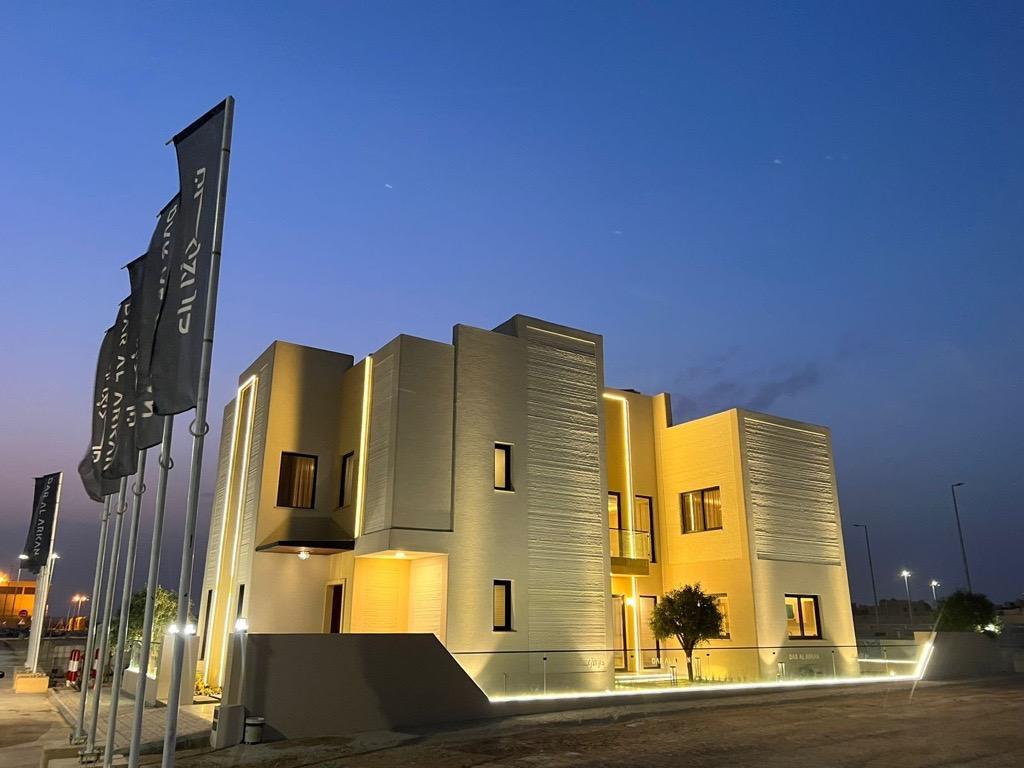

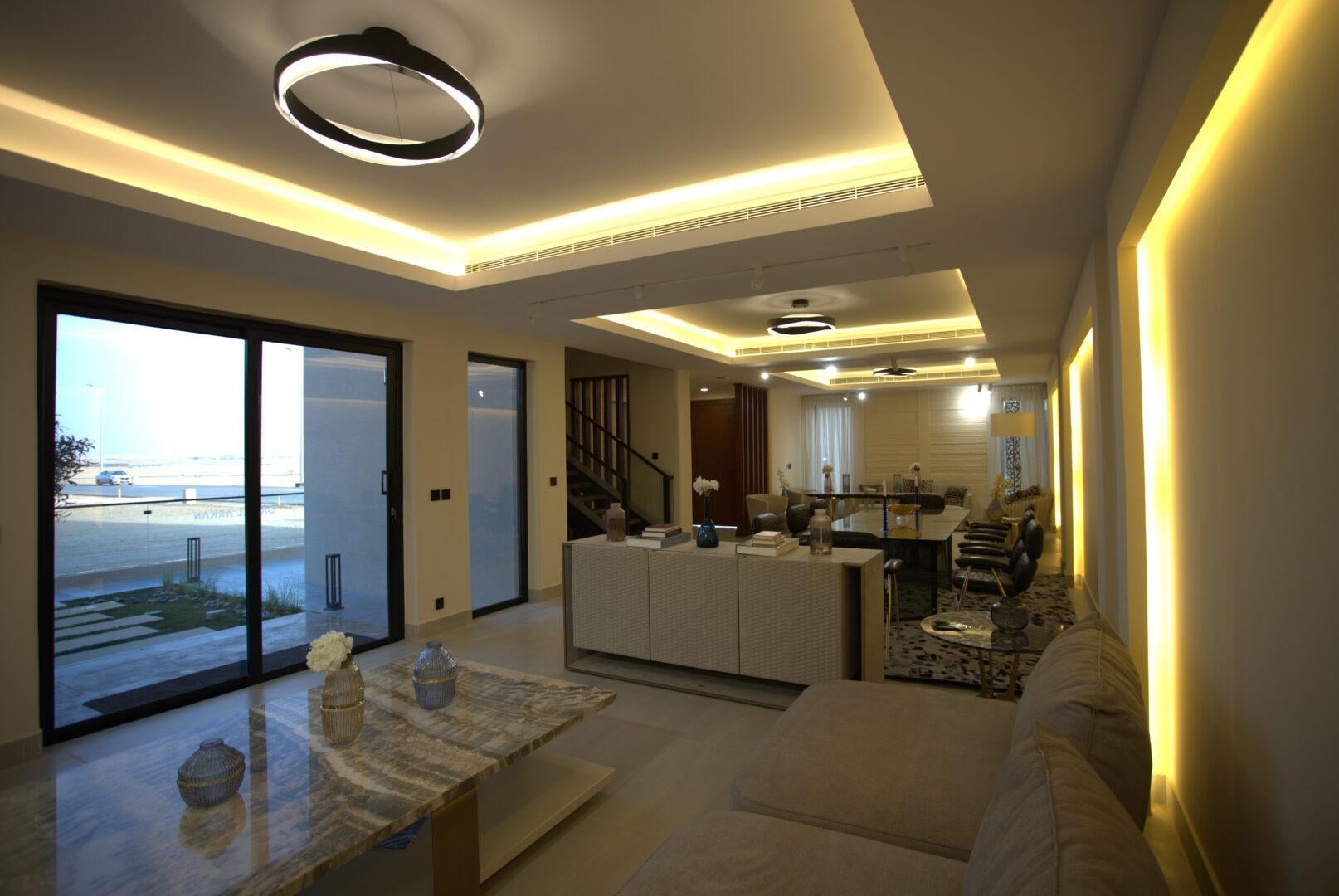
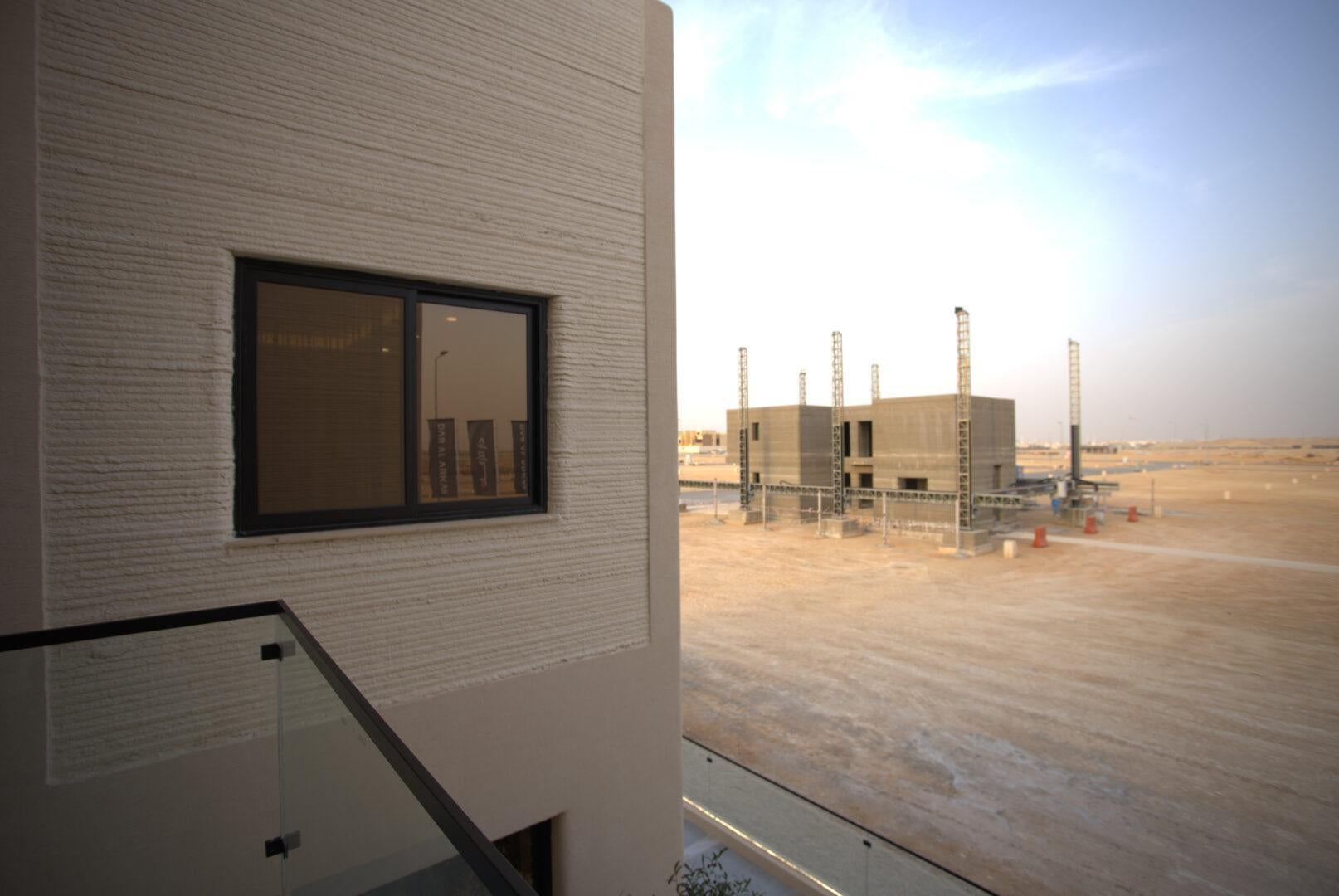
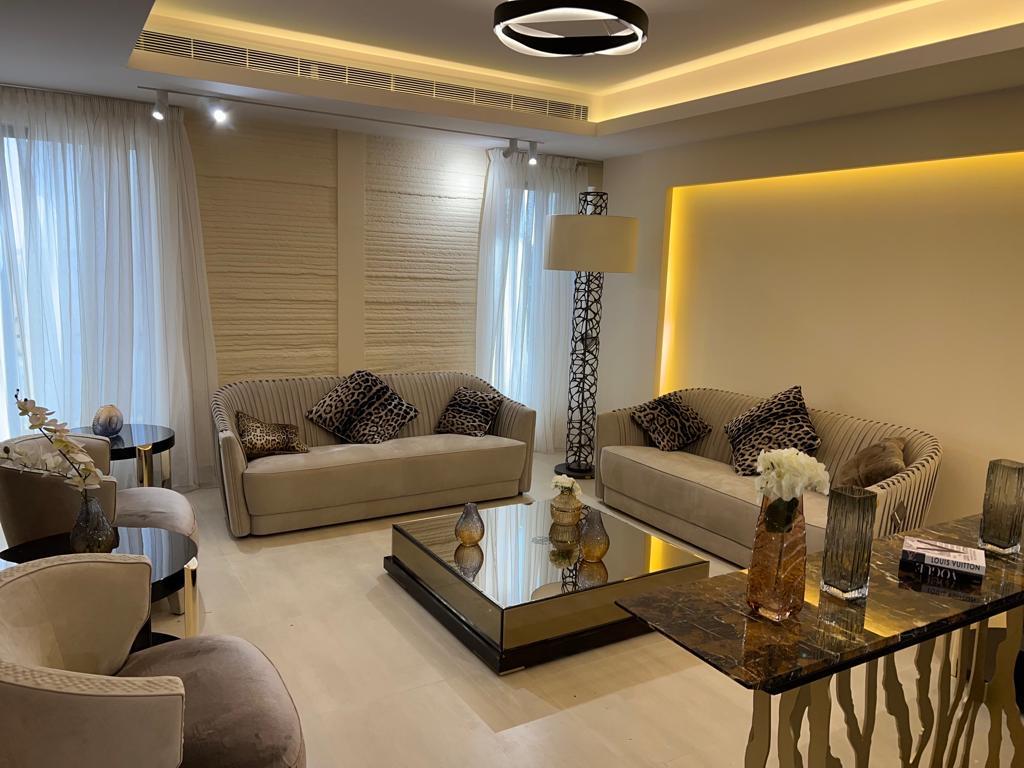
3D printing has revolutionized the way we think about building design, allowing architects to take advantage of its features and create structures that are much more intricate and complex than those made with traditional methods. When comparing a 3D printed house with a traditional one, it is clear that the 3D printed house has the potential to be far more aesthetically pleasing.
Summary
In conclusion, 3D construction printing represents a significant technological advancement in the field of construction. This innovative solution has proven to be efficient, cost-effective, and environmentally friendly. It offers a range of advantages over traditional construction methods, including reduced labor costs, faster construction times, and the ability to create customized designs. While there are still challenges to be addressed, such as the need for standardized regulations and codes, the potential benefits of 3D printing in the construction industry cannot be ignored. As technology continues to evolve, we can expect to see continued advancements and increased adoption of 3D printing in construction.
